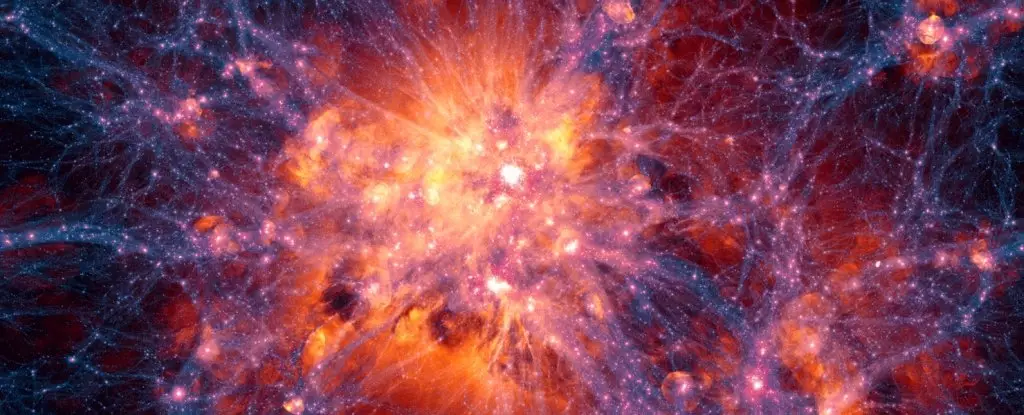Albert Einstein’s theory of general relativity continues to stand as a cornerstone of modern physics, shaping our understanding of gravity and the structure of the Universe. A recent monumental project undertaken by an extensive cohort of astronomers has tested this theory on an unprecedented scale, mapping nearly 6 million galaxies over an expansive span of 11 billion years of cosmic history. This undertaking not only reaffirms Einstein’s predictions regarding gravity’s role in the cosmos but also opens new doors for further inquiry into the intricacies of the Universe itself.
The distribution of these galaxies demonstrates the intricate dance of gravity, which pulls these celestial bodies along the strands of the cosmic web—counteracting the unsettling force of the Universe’s expansion. What is particularly remarkable about this research is its extensive scope; as it encapsulates nearly the entire chronology of the Universe, it signifies that general relativity holds true not only in isolated local scenarios, such as within solar systems, but also on a grand cosmological scale.
Examining the formation rate and distribution of galaxies serves as a critical endeavor for scientists aiming to validate fundamental theories of gravity. As cosmologist Pauline Zarrouk noted, current theoretical frameworks have been primarily validated in smaller contexts. This study aims to step beyond those boundaries, offering critical insights into how mass attracts mass, an enigma that underlies the very fabric of the Universe. The gravitational attraction not only structures galaxies but also shapes the overall topology of space-time itself, engendering a Universe that behaves coherently in accordance with Einstein’s insights.
Based on the findings captured by the Lawrence Berkeley National Laboratory’s Dark Energy Spectroscopic Instrument (DESI), it is evident that the cosmic web’s evolution showcases characteristics predicted by general relativity. Such groundbreaking results underline the idea that if gravity were altered significantly, the Universe would exhibit completely different properties, hinting at the delicate balance that defines cosmic architecture.
At the core of this astronomical inquiry lies the attempt to unravel two of the Universe’s most confounding features—dark matter and dark energy. Though these phenomena collectively constitute over 95% of the Universe, their exact compositions and natures remain elusive. Dark matter acts as a gravitational glue, holding together galaxies and clusters, while dark energy propels the seemingly accelerated expansion of the cosmos.
This mapping effort, which scrutinizes the distribution and growth of the cosmic web, holds potential implications for our understanding of both dark matter and dark energy. By examining the characteristics of cosmic structures over vast timelines, researchers may be able to discern variations in gravitational influence or patterns that hint at these invisible components. The work conducted with DESI signals that the research team not only has the capability to probe modified gravity concepts but also to refine the constraints applied to dark energy models.
The DESI collaboration is still in the early phases of its ambitious project, with plans to analyze data amassed over three years. By the time the full suite of data is compiled, the collaboration anticipates that it will cover over 40 million galaxies and quasars. Each of these contributions will not only enhance our existing knowledge of the Universe’s past and present but can potentially illuminate future understanding of its ultimate fate.
As Dragan Huterer from the University of Michigan indicated, we are merely at the genesis of what DESI can reveal. Further analysis promises to deepen our insights into cosmic evolution, possibly elucidating the properties of elusive components like neutrinos. The implications of these findings could be transformative, filling in critical gaps regarding how the cosmos operates.
The ongoing efforts illustrated by this cosmic mapping endeavor ultimately call for a paradigm shift in how we contemplate the fabric of reality. Amid a landscape that is a mere fraction observable, the collective mission to understand the Universe’s hidden constituents is daunting yet deeply compelling. The notion that we can gather empirical evidence through extensive celestial surveys fosters a sense of unity between astronomical phenomena and fundamental physics, paving the way for revelations that might one day bridge quantum and classical realms. The future looks brighter than ever as we strive to unlock the secrets of the cosmos, closely following the trail blazed by Einstein over a century ago.

